Planting spruce in the spring in the garden: care and cultivation in the open field
Nature itself gave man an evergreen beauty as a friend - a spruce. It is decoratively green all year round, and cleans the air remarkably. Everything has already changed around, and the spruce is still nobly beautiful, very proportional and viable. To grow such an incredibly kind plant to people, you need to think about proper planting and caring for a spruce seedling in your summer cottage. You will read about all this, as well as about the types and varieties of spruce trees, about the choice of seedlings, the timing and place of planting in this material.
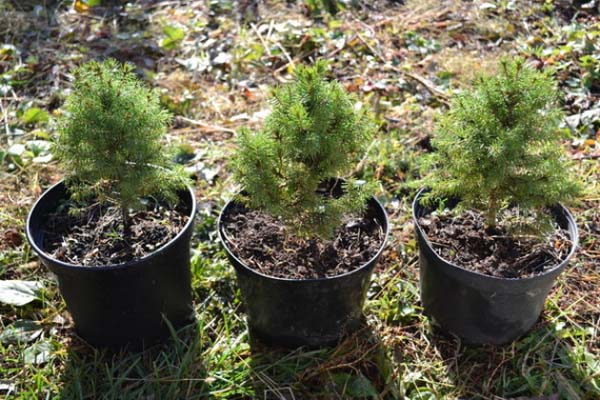
Content
Popular types and varieties of spruce
The most popular spruce trees that summer residents grow in their gardens are the following:
- Common (European): Nidiformis;
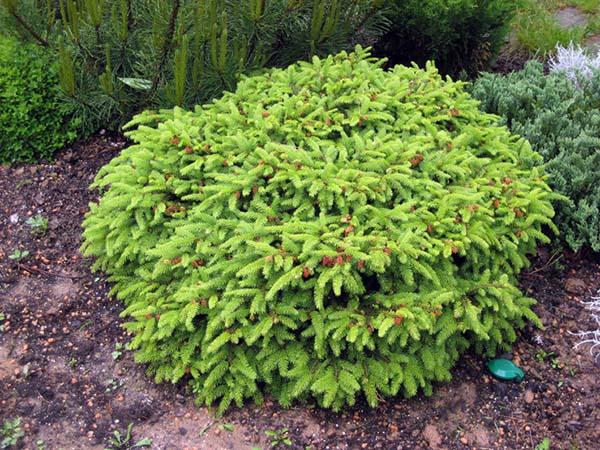
Nidiformis - Barbed (blue): Hoopsie, Glauka, Glauka Globoza;
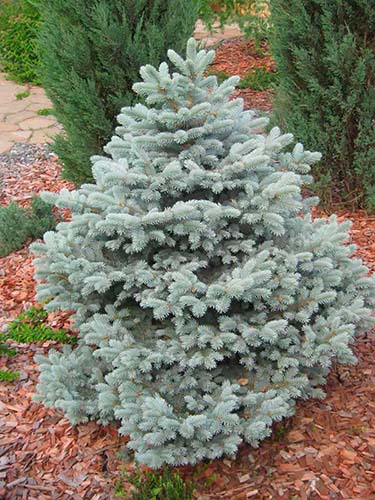
Glauka - Canadian (gray): Alberte Globe, Konica, Ehiniformis;
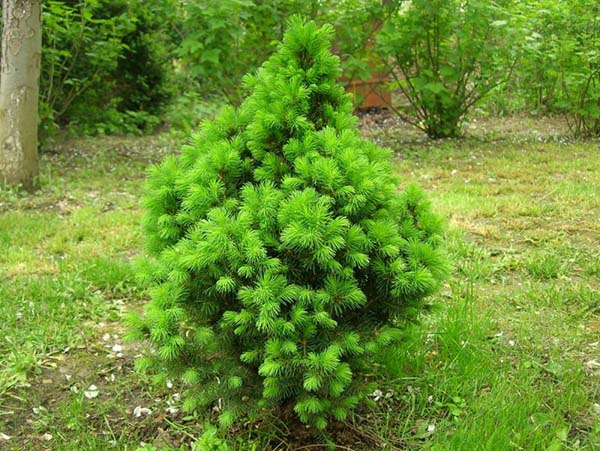
Konica - Eastern: Golden Star;
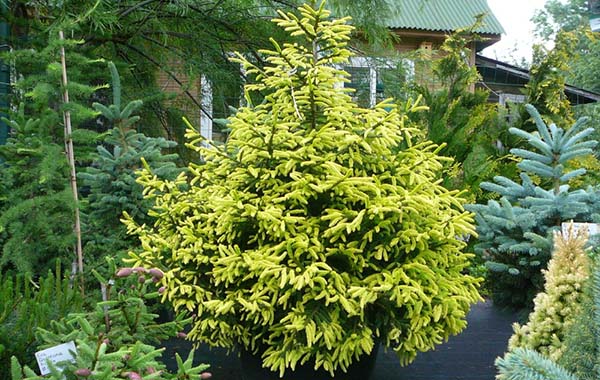
- Black: Nana.
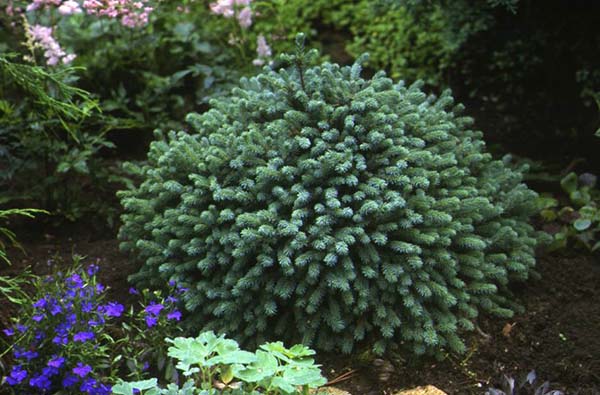
Video: types and varieties of spruce
By the way! GrowingCanadian Koniki spruce we will definitely consider in one of the following articles, but for now you can watch the video below.
Video: how to properly plant and care for Canadian spruce
By the way! In general, there are no serious differences in the cultivation of various types of ephedra, be it common, blue or Canadian spruce. That is why general instructions for planting and caring for spruce in a summer cottage will be presented below.
Spruce breeding methods
There are only three ways to propagate spruce trees: plant with seeds (difficult and long), grow from cuttings (easier and faster), buy and plant ready-made seedlings (easiest, but more expensive).
Note! Details of spruce propagation by cuttings and planting seeds you can also find on our website in the relevant materials.
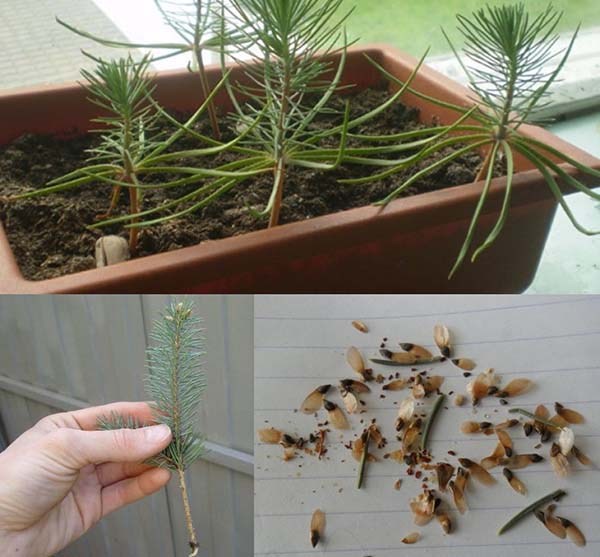
When and how to plant a spruce seedling in a summer cottage
Sapling selection
Seedlings of all conifers, including spruces, should be purchased only in containers, that is, with a closed root system. These trees do not tolerate drying out of roots, in other words, the plant must necessarily sit in an earthen coma, which must be regularly moistened as it dries. Therefore, when buying a seedling with an open root system on the market, you are very much at risk. The best option is to purchase a container plant in specialized garden centers.
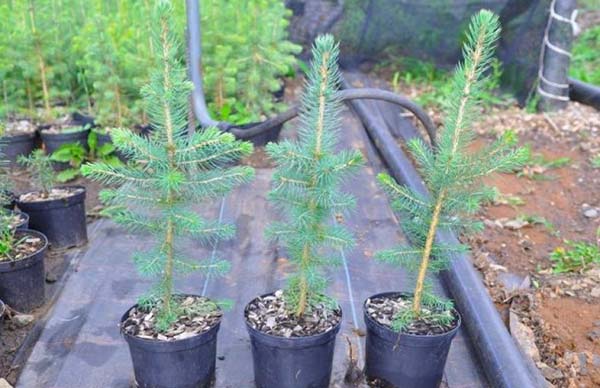
Landing dates
The ideal time to plant spruce is spring (April-May) and early autumn (late August-September). The most favorable season is still spring, when the ground has completely thawed out after winter, but sap flow and vegetation have not yet begun. It is during these periods that the root system of plants is actively growing, so it will be easier for the ephedra to take root in your garden.
Although, if you bought a spruce seedling in a container in summer, then there is no point in waiting for autumn. In this case, you can plant it in the summer, unless more frequent watering and shading from the sun's rays are required.
Place on the site
In order for the spruce to grow well and not get sick, it needs to find the right place in the garden. Conifers do not like deep shade and scorching sun, so it should be well lit, but not too open. In this regard, it is ideal if there is a light partial shade. Small decorative conifers can be planted next to home, but it is advisable to plant a large spruce far from the home (somewhere at a distance of 10-15 meters) and from other plants, because this conifer has a superficial root system, which will simply take all the moisture and space from the nearest neighbors.
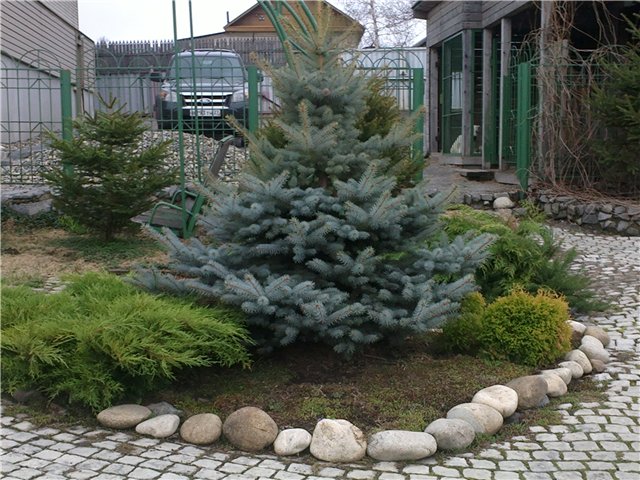
If you are planning group planting of fir trees, for example, if you want to make a hedge, then plant the seedlings at a distance of at least 1 meter, and preferably 2-3 m.
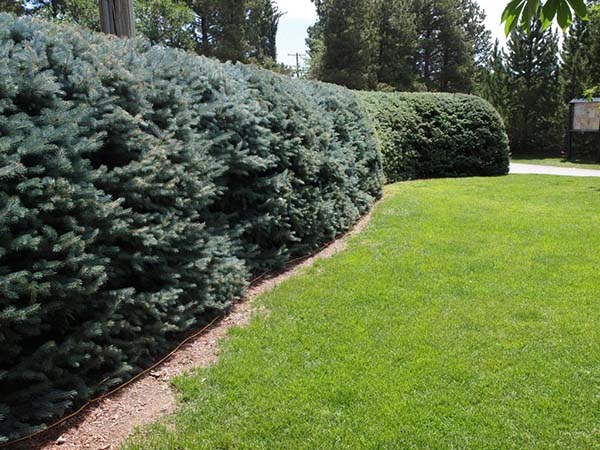
As for landscape design, as you probably noticed, spruces are very beautifully combined with other conifers: thuami and junipers.
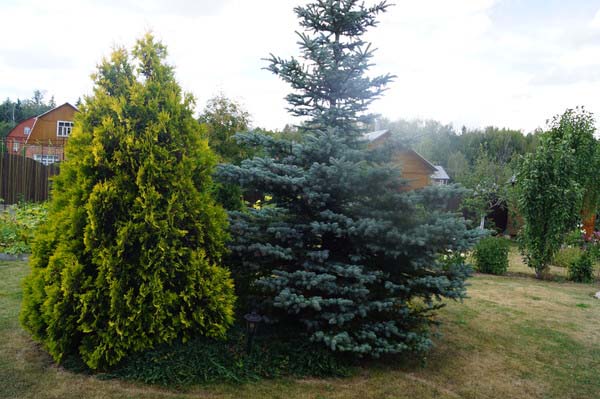
Planting hole and soil
The size of the planting pit for planting spruce may vary depending on the size of the seedling itself. As a rule, the hole should be 2 times larger than the earthen lump of the plant. For example, if it is 30 by 30, then a 60 by 60 centimeters landing pit is suitable, although 1 by 1 meter may be needed.
If your land is heavy on your site, and the groundwater passes too close, but at the bottom of the pit, you should pour a drainage layer of 15-20 centimeters, for example, from rubble or broken brick, and add sand there.
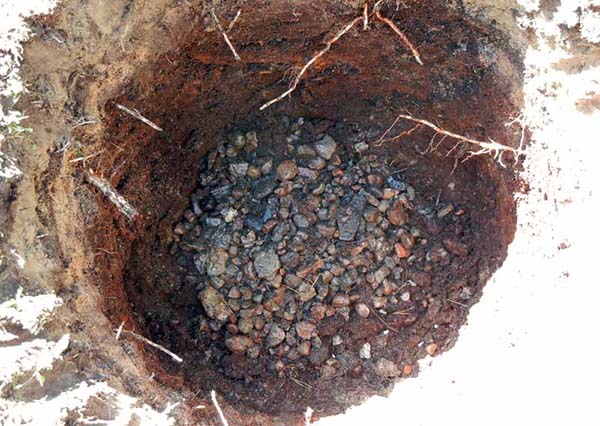
The planting hole should be filled with a good fertile soil mixture, which can be prepared using the following ingredients: turf, leafy soil, peat and sand, taking them in a ratio of 2: 2: 1: 1. And also add a little less glass (100-150 grams) of nitroammofoska, mixing well the fertilizer with the resulting substrate.
Landing
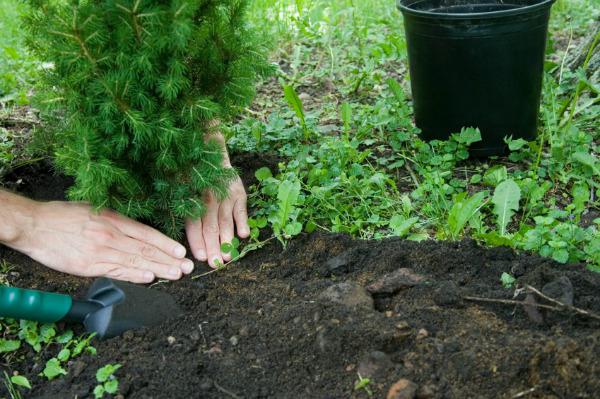
Step-by-step instructions for planting a spruce seedling in open ground:
- Find a suitable spot in the garden.
- Dig a planting hole and prepare a potting soil.
- Drain if necessary and add some soil.
- Place the seedling so that its root collar is 3-5 centimeters above the ground. Do not under any circumstances deepen!
- Next, fill the hole with the prepared soil mixture and tamp it lightly.
- Water the planting hole liberally. The roots of the plant should be in good contact with the ground, and for this, water should not be spared.
- When the ground has settled, add more soil and water again.
- If the seedling is young, then tie it to a support.
- Mulch the near-stem soil with peat or compost for better moisture retention.
Video: how to plant a fir tree correctly
By the way! If you are going to transplant an old spruce more than 3 meters high, then such a plant should be planted with a frozen clod of earth at a certain time: from late autumn (from November) to early spring (to March).
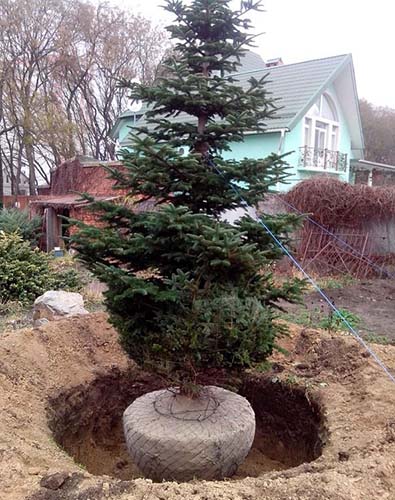
Outdoor spruce care in the country
Despite the fact that spruce trees require good lighting, young seedlings should be mandatory in the first couple of yearsshade. This can be achieved either by planting a spruce seedling near the fence, or by pulling a special awning. This is especially dangerous in early spring, when the ground is still frozen, food does not flow to the roots, that is, the ephedra can simply burn out.
Also in the first 2 years, young conifers should mulch peat or sawdust for the winter. The mulch layer should be about 6-8 centimeters. It will not be superfluous and winter shelter from spruce branches. Mulch will also help to retain moisture better.
The plant is not very demanding on watering, but in dry weather, it needs frequent moisture (somewhere between 1-3 buckets of water per week), especially young trees. Moreover, it is advisable to pour water not directly under the barrel, but into the near-barrel circle. It is optimal to do this in the evening after sunset or early in the morning, but not during sunny times.
Advice! Conifers are also very fond of and respond well to watering. sprinklingespecially in dry summer weather.
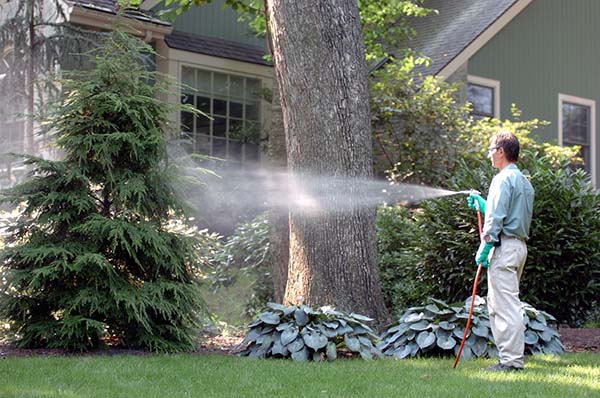
Another important step in caring for spruce is weeding. Do not forget that the root system of the plant is high enough, so you should weed shallowly, about 5-10 centimeters.
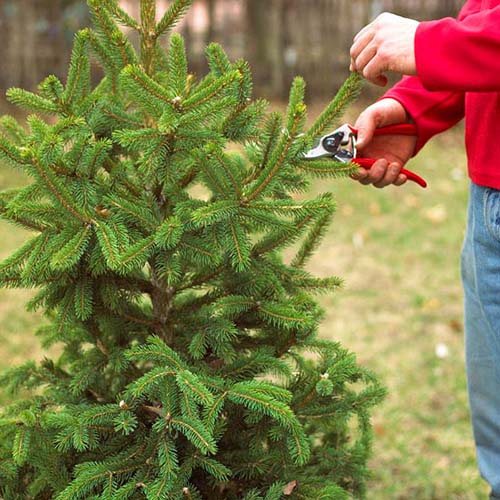
Coniferous plants do not require mandatory pruning, but periodically it is still necessary (if desired) to carry out corrective and formative haircuts.
Video: trimming spruce and prickly (blue)
As a rule, conifers are quite unpretentious and do not require additional top dressing, but if you fertilize the spruce with compost, loosening the trunk circle, then the plant will be very grateful to you and be sure to be noted with more magnificent forms and saturated color. As for mineral dressings, once a year you can sprinkle fertilizer in the plant's trunk circle, and then water it abundantly. In general, there are special fertilizers for conifers.
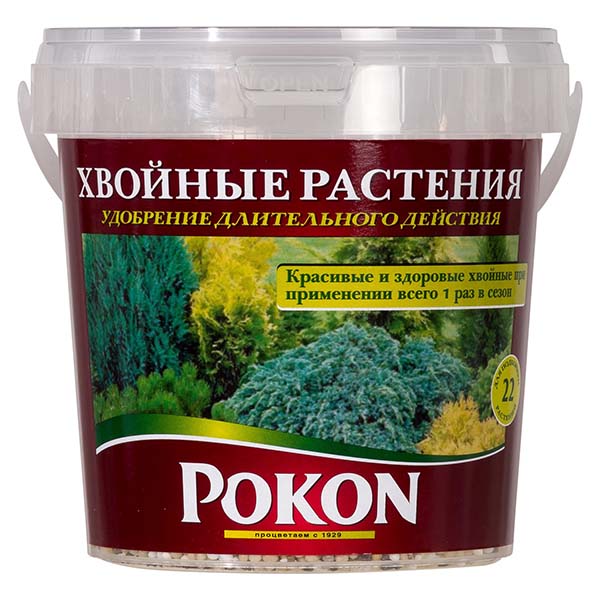
Important! Do not fertilize in the autumn, otherwise the plant will grow and may die due to the onset of frost.
Diseases
If the winter is warm and humid, then the ephedra can pick up a fungal disease. Periodic examinations of your garden pets and the use of various fungicidal preparations will help you cope with the attack.
Conifers are one of the favorite crops that you always want to have in the country, especially spruce. To help your ephedra live up to your expectations and withstand adverse conditions, take a look at our tips and special tips for planting and caring for it.
Note! On our website you can also find detailed materials on planting and growing other conifers in the garden, for example, mountain pine, thuja and juniper.
Video: how to plant a coniferous plant (spruce) correctly

